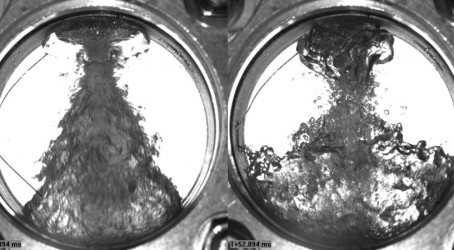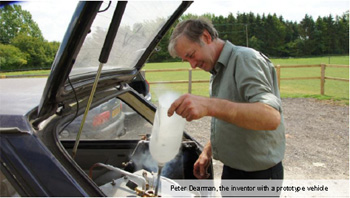By Jonathan Benson | Natural News
—
(NaturalNews) Imagine that instead of having to pump fossil fuel-based gasoline into your boat or car, you could instead use “liquid air?” The London-based Dearman Engine Company (DEC) has reportedly developed a new engine technology that uses cryogenic air to power vehicle engines, and one of the best parts about it — the technology produces no pollution.
Cooling air to a frigid minus 256 degrees Fahrenheit (minus 160 degrees Celsius) effectively turns it into a liquid that can be used as fuel. When this liquid is mixed with certain other fluids inside of an engine that heats it up and turns it back into a gas, the conversion creates high pressure levels that act as usable energy to drive the pistons and create usable energy.
“You inject a heat-exchange fluid, such as anti-freeze and water, into the head of the piston just before you inject liquid nitrogen. The result is that all the expansion takes place inside the cylinder,” explained DEC’s founder Toby Peters to Transport Engineer. “And because you’ve got this volume of heat exchange fluid, it is isothermal expansion — so it keeps the temperature the same, which is far more efficient” (http://www.transportengineer.org.uk).
Cryogenic engine technology is not new, but the new design, which was birthed out of research conducted at Queen Mary University of London, is far more efficient and effective than earlier concepts. According to reports, a prototype engine has already been confirmed by independent analysis to successfully power a car at more than 30 miles per hour producing only cold air as exhaust.
According to Discovery News, the engine operates similarly to the common internal combustion engine, except it does not use spark plugs. And the cold air exhaust that results from the pushing out of the heat exchange fluid and air can be reused to cool the engine, or to cool, say, a refrigeration truck equipped with the technology.
“The work to date has delivered and validated a proof of concept engine, which produces positive power, and confirmed that there are a number of suitable applications,” added Peters. “The next stage is engineering to optimize the sub-systems and produce a commercial demonstrator. Our work to date has confirmed there are currently no show-stoppers.”
To learn more about DEC’s liquid air engine technology, visit:
http://www.dearmanengine.com
Sources for this article include:
http://news.discovery.com/autos/engine-runs-liquid-air-120126.html















dwidnelq
January 27, 2013
Meaningless greenwash. The “fuel” requires an extensive amount of energy to create and store.
DeSwiss
February 13, 2013
Reading is fundamental: http://www.cnn.com/2012/12/07/tech/dearman-liquid-air-storage